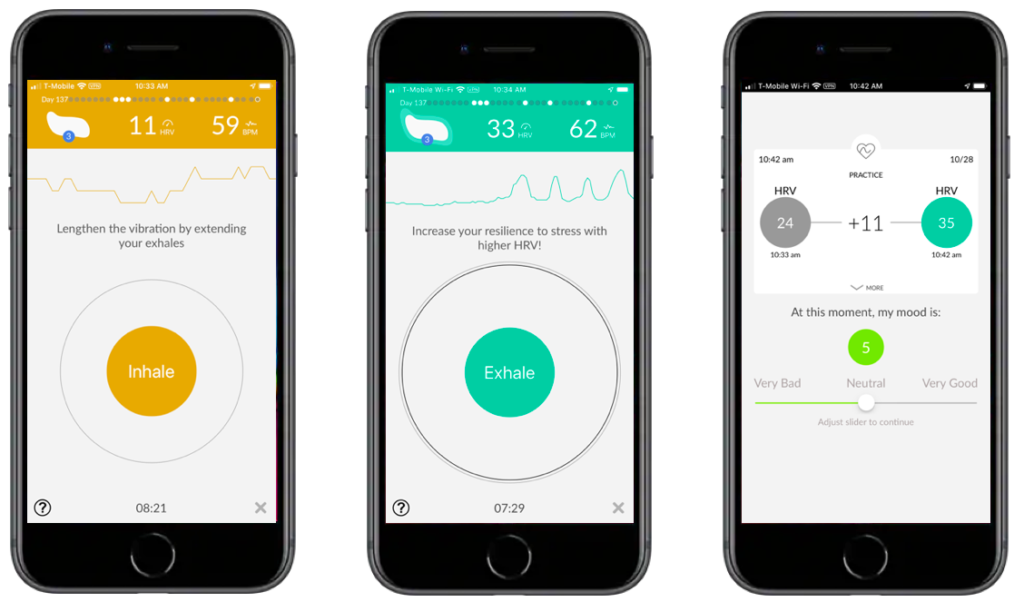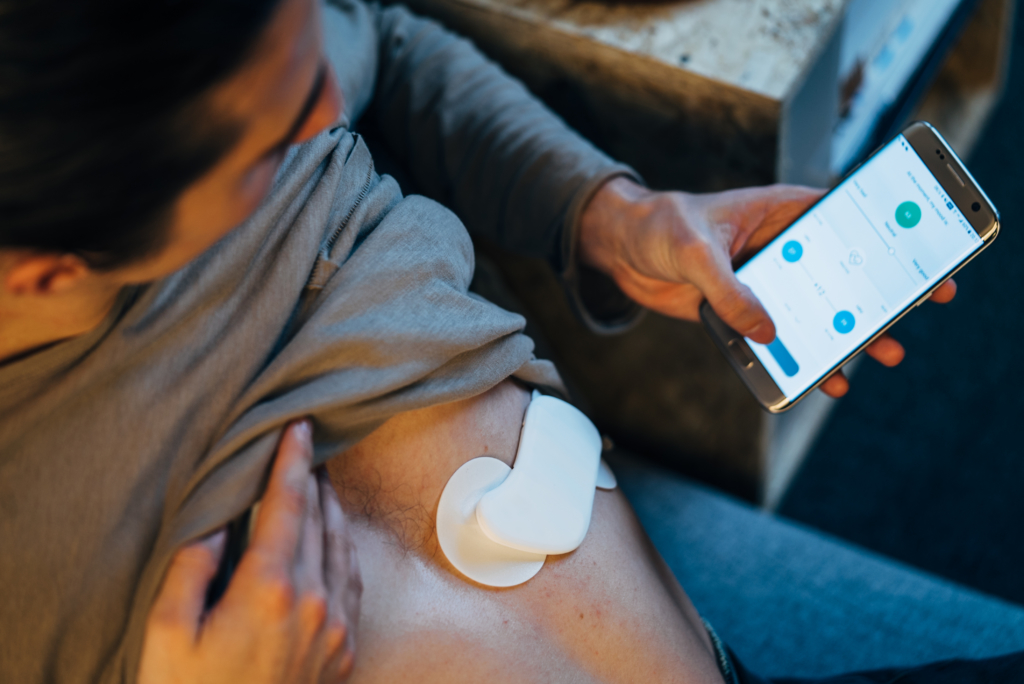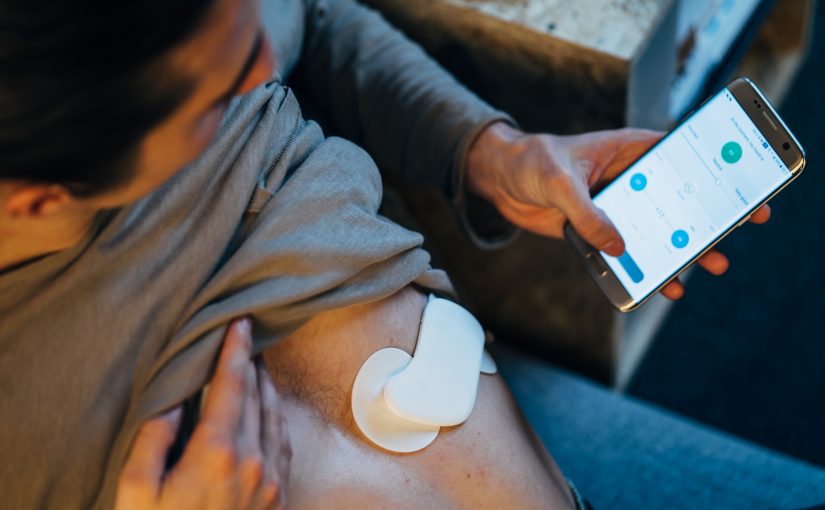
What is a good heart rate variability?
This is the most common question that people new to heart rate variability training ask us. Other variations of this question include: “What is a normal heart rate variability?” and “What should my heart rate variability be when I’m feeling [fill in the blank]?” and “What number am I aiming for overall?”
These questions are understandable, since we tend to be goal-oriented when it comes to training or improvement, and we like to contextualize our current status relative to where we want to be, so we have an idea of how much progress needs to be made.
However, unlike setting goals to run a faster mile, complete more repetitions, or lift heavier weights over time, heart rate variability training is not focused on one easily quantifiable outcome (e.g., achieving an average heart rate variability of 45 after three months). One of the main reasons is because heart rate variability is specific to each individual (a normal range for an adult can span anywhere from single digits to over 200), and numerous factors impact heart rate variability.
What affects heart rate variability?
Heart rate variability is influenced by many factors both within and outside our control. These factors include:
- Age: Heart rate variability tends to decrease as we get older
- Gender: Women tend to have slightly lower heart rate variability than men
- Chronic health conditions: Those with chronic health conditions like diabetes are more likely to have lower heart rate variability
- Genetics: Healthy heart rate variability is relative and specific to the individual — whereas one healthy person may regularly average in the 60s, another equally healthy individual may regularly average in the 20s. This does not necessarily mean that one person is healthier than the other.
- Athleticism: Elite athletes typically have higher heart rate variability relative to the general population
- Diet: Meals high in saturated or trans fats and high glycaemic carbohydrates have been found to reduce heart rate variability, in contrast with a Mediterranean diet and meals high in omega-3 fatty acids, B-vitamins, and probiotics, which have been shown to shown to benefit heart rate variability.
- Alcohol: Drinking alcohol can lower heart rate variability
- Sleep habits: Poor sleep quality, or not enough sleep can contribute to lower heart rate variability
- Stress levels: Increased stress, worry, or anxiety can all contribute to lower heart rate variability.
How do you measure success when it comes to heart rate variability biofeedback training?
To give you a rough idea of average heart rate variability using data from Lief wearers, the average for those aged 18-24 = 41, for those aged 25-34 = 39, for those aged 35-44 = 34, for those aged 45-54 = 32.5, and for those aged 55 or older = 23. Keep in mind this is a limited sample of data that is not representative of the general population, since Lief wearers tend to be seeking help for stress. We emphasize that rather than focusing on achieving a specific average based on other people’s data, understanding your own trends over time is much more useful and meaningful.
It’s important to recognize that your heart rate variability is constantly in flux due to external factors, many of which are outside of your control. For example, if you’re having a stressful week because you’re working to meet a deadline, or you’re feeling dejected from a recent breakup, your average weekly heart rate variability will likely be lower than usual. However, this should not be a cause for concern, since those were events that are probably not characteristic of your typical week.
More importantly, you should be mindful of how different activities you engage in regularly influence your heart rate variability, and use that powerful biomarker feedback to proactively take steps to improve your health. For example, seeing your heart rate variability lower after happy hour may encourage you to have only one drink next time, or seeing your heart rate variability increase during meditation may motivate you to do it more.
Helpful metrics to assess your heart rate variability biofeedback training progress include:
- How many minutes a day are you participating in biofeedback exercises? At a minimum, we recommend 10 minutes per day.
- How often do you successfully increase your heart rate variability pre-post biofeedback exercise? This percentage should remain steady or go up as you increase your training threshold.
- On average, how many points does your heart rate variability increase pre-post biofeedback exercise? +3 or more is a good sign.
- Is the amount of time it takes for you to increase your heart rate variability during a biofeedback exercise getting shorter?
- Is your weekly average heart rate variability trending upwards over time?
What do you want to achieve with heart rate variability biofeedback training?
Our heart rate variability is constantly changing throughout the day. Thus, rather than trying to impossibly maintain the same level all day long, it’s more important to train yourself to quickly bounce back whenever your heart rate variability is relatively low.
In the short term, heart rate variability biofeedback training can help restore your body and mind during moments of acute stress. By engaging in biofeedback training whenever your heart rate variability starts to dip, you’re pumping the brakes on your sympathetic nervous system’s “fight or flight” response. The long term goal of heart rate variability biofeedback training is to gradually improve your baseline heart rate variability, and help you feel empowered to manage your stress more effectively.
Best practices for measuring heart rate variability
The best way to determine your unique heart rate variability range is to use a clinically accurate wearable device, like the Lief Smart Patch, to measure your heart rate variability consistently over time. The discreet, comfortable Lief Smart Patch enables wearers to monitor their heart rate variability throughout the entire day, and even while asleep. To obtain the most useful data, we recommend wearing the Lief Smart Patch daily for at least 8 hours each day during the same time period.
Having access to a wearable EKG device makes it easier than ever to see how your heart rate variability changes throughout the day. In addition to building awareness of your baseline, you can participate in calming biofeedback exercises during moments of acute stress, and see real time positive feedback that you’re increasing your heart rate variability.

How does the Lief Smart Patch work?
On day one, you wear your Lief for at least six hours so it can personalize to your body by reading approximately 20,000 heartbeats to determine your heart rate variability range. Afterwards, whenever it reads that your heart rate variability is lower than usual, your Lief gently alerts you by initiating a bio-tuned breathing exercise through vibration feedback.
The Lief Smart Patch is continuously updating, so the more you wear it, the more it learns your unique physiology so it can deliver personalized biofeedback exercises to you on an as-needed basis.

How does my Lief Smart Patch tell me whether my heart rate variability is relatively lower or higher?
Lief uses intuitive color zones to help you understand when your heart rate variability is relatively lower or higher. Your Lief categorizes your unique HRV range into quintiles, where the lowest 0-20th percentile = red / tense, 20th-40th percentile = yellow / alert, 40th-60th percentile = gray / neutral, 60th-80th percentile = green / calm, and the highest 80th-100th percentile = blue / restore.

These simple color zones enable you to see in real time, as well as historically, when your heart rate variability was relatively lower or higher during the hours that you were wearing your Lief.
The Lief Smart Patch trains your heart rate variability higher and helps activate your parasympathetic nervous system’s “rest and digest” mode. Over time, the Lief program helps you build resilience to stress by increasing your awareness of your negative triggers, and empowering you to use your breath to help balance your nervous system response so you can engage more productively in all situations.





Leave a Reply
You must be logged in to post a comment.